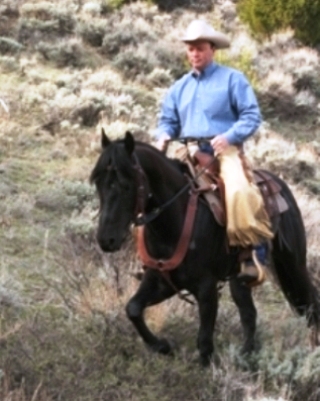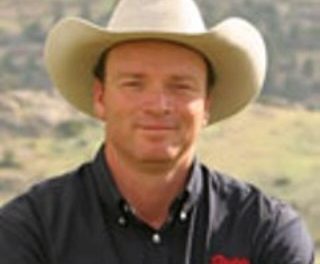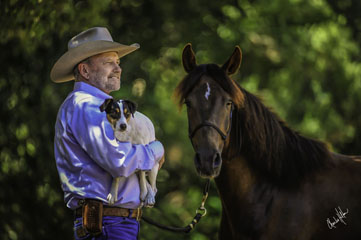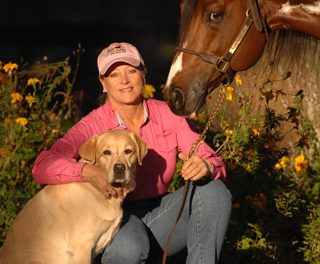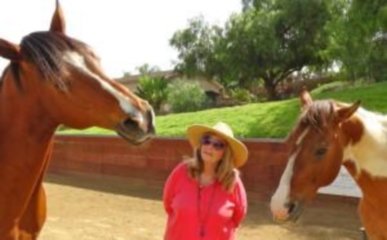 Riding up and down hills is a fun and challenging part of trail riding. Sometimes people run into problems with their horse wanting to rush up or down a hill, getting anxious, and not feeling safe or in control. This month we will cover how to ride up and down hills, how to train your horse to navigate hills safely and calmly, and some things you can do as a trainer to stop hill-related problems before they get out of hand.
Riding up and down hills is a fun and challenging part of trail riding. Sometimes people run into problems with their horse wanting to rush up or down a hill, getting anxious, and not feeling safe or in control. This month we will cover how to ride up and down hills, how to train your horse to navigate hills safely and calmly, and some things you can do as a trainer to stop hill-related problems before they get out of hand.
I believe that part of having a really broke horse is the rider knowing what is going to happen before it actually does. Then you can anticipate situations before you get into them and train your horse to respond exactly how you want him to, setting him up for success.
Pick a hill, preferably a relatively long one that is not too steep. Ride up it till you get to the point that it is steep enough that your horse starts to feel like he wants to hurry. At this point, pick up on one rein, tip his nose to the side, and calmly turn him back down the hill. If he starts to hurry down the hill, pick up one rein and tip his nose to the side, turning him slightly, then turn him back to the other direction. The reason I turn my horse slightly to each side instead of just turning him straight back up the hill is that I want him to balance himself and give me his full attention before he tries to turn back up the hill. You can flip your horse over if you jerk him into a turn on a steep hill and take his hindquarters out from under him. That is why it is so important that all your hill training is done quietly, gently, and calmly. The reason I pick up on one rein at a time rather than both reins is that it keeps my horse from bracing against me. The gentle turns get him to slow down while keeping him soft and without jerking him off balance and causing him to stumble and fall.
I don’t want to have to hold my horse in check to keep his speed under control when going up or down a hill. I want to be able to put some slack in the reins and have him moderate his own speed without me constantly in his face. If you teach him to travel in a balanced way, he will be able to hold himself at a consistent speed much more easily. That said, I don’t like to just throw the reins at my horse and let him pick his own way up or down a hill. I think of it this way: would you get on the interstate, set the cruise control in your car, and climb in the back seat? Of course not! So, while you will give your horse slack in the reins and expect him to moderate his own speed, you are still going to choose a specific path up or down the hill you are riding and guide him along it.
Some people like to zig-zag up or down hills rather than riding straight up and down. That is fine, although I want to be confident that my horse can go straight up or down if I need him to. I rarely go straight up a hillside, as the best path is usually traversing the hill in some way. When I am looking for the best path, I like to keep my eyes open for game trails or paths made by livestock. Usually you will see these, even if they are faint, and find that the animals have already showed you the best way to get up that hillside!
Hills are very physically demanding on your horse and as a rider it is your responsibility to make this task as easy on him as possible. I never run my horse up a hill – I like to keep him at a walk when I am going uphill. Some people tell me “my horse likes it better if I let him run up hill”. I would argue that your horse will be breathing very hard at the top of the hill if you let him run up it and you won’t have any horse left at the end of a long day because he will have worn himself out. I consider it a sign of respect for your horse that you do your best to make things as easy on him as possible.
Your seat and body position is very important when riding hills. When going uphill, you should lean forward in your saddle. Your horse bears most of his weight over his shoulders naturally and by leaning forward you help him carry your weight more naturally and easily. Also shifting forward takes your weight off his hindquarters, freeing him up to power off his hind end as he climbs the hill. When you are riding downhill, many people will tell you to lean back. This is true to a point. I like to ride so I am sitting straight and naturally, with my body at the angle a tree would grow on the hillside. You need to be careful not to lean too far back. If you throw your shoulders way back, you will drive your seat into the small of your horse’s back and cause him to have to hollow his spine, making it very hard for him to get his hind end underneath him. Your saddle will also be more likely to slip forward if you are sitting too far back and causing your horse to hollow his back.
You don’t want your horse on his front end going downhill. To teach him to keep his hind end under him, choose a long hill with good footing that you feel comfortable on. If you feel your horse getting on his front end as you go down, push him into the bridle a bit. If you are comfortable, push him up to a trot or even a lope. Drive those hindquarters under him. Be very careful to pay attention to your body position here and make sure you are sitting up straight and not getting too far back in the saddle. Keep guiding your horse’s direction but give him some slack in the reins so he learns to balance himself.
Once your horse is going up and down hill in control and with his hind end under him, it’s time to play. Find some shorter, steeper hills and practice going up and down them. My goal is that when my horse is going uphill he is relaxed and very deliberately putting each foot in front of the other slowly and calmly. When he is going downhill, I want him sitting back on his hind end and moving in a relaxed and balanced way. If you teach control and respect in the little things as you train your horse, then the bigger things never become an issue.
I think of my horse as my partner and I want a partner that I can trust in any situation. If I get in trouble and end up on a hill that is steeper than I was anticipating, I want my partner to work with me to get out of the situation safely. Take the time to build a foundation with your horse of mutual confidence and respect and you will have a partner who takes care of you and helps you, rather than making a bad situation worse. If you ever do feel you are in over your head, there is nothing wrong with stepping off your horse and leading him up or down a hill. However, ALWAYS step off on the uphill side.
Enjoy your partnership with your horses, and until next time, may God bless the trails you ride.
For more information on Ken McNabb’s programs call us at 307-645-3149 or go to www.kenmcnabb.com.

